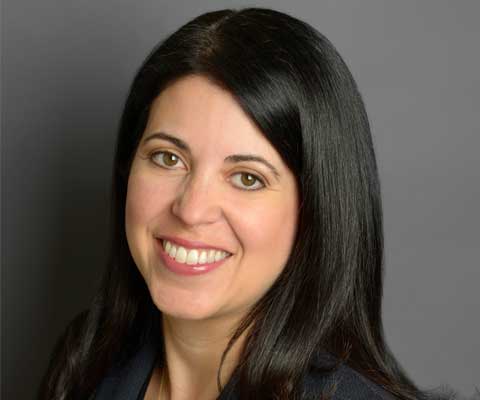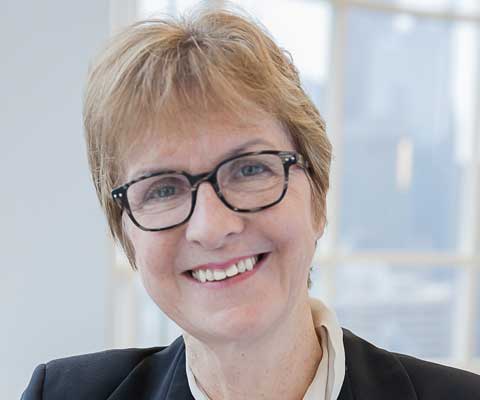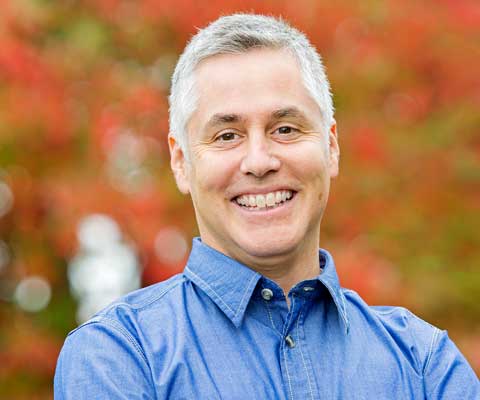I have a couple of notices from the Canadian Science Policy Centre (CSPC), a twitter feed, and an article in online magazine to thank for this bumper crop of news.
Canadian Science Policy Centre: the conference
The 2017 Canadian Science Policy Conference to be held Nov. 1 – 3, 2017 in Ottawa, Ontario for the third year in a row has a super saver rate available until Sept. 3, 2017 according to an August 14, 2017 announcement (received via email).
Time is running out, you have until September 3rd until prices go up from the SuperSaver rate.
Savings off the regular price with the SuperSaver rate:
Up to 26% for General admission
Up to 29% for Academic/Non-Profit Organizations
Up to 40% for Students and Post-Docs
Before giving you the link to the registration page and assuming that you might want to check out what is on offer at the conference, here’s a link to the programme. They don’t seem to have any events celebrating Canada’s 150th anniversary although they do have a session titled, ‘The Next 150 years of Science in Canada: Embedding Equity, Delivering Diversity/Les 150 prochaine années de sciences au Canada: Intégrer l’équité, promouvoir la diversité‘,
Enhancing equity, diversity, and inclusivity (EDI) in science, technology, engineering and math (STEM) has been described as being a human rights issue and an economic development issue by various individuals and organizations (e.g. OECD). Recent federal policy initiatives in Canada have focused on increasing participation of women (a designated under-represented group) in science through increased reporting, program changes, and institutional accountability. However, the Employment Equity Act requires employers to act to ensure the full representation of the three other designated groups: Aboriginal peoples, persons with disabilities and members of visible minorities. Significant structural and systemic barriers to full participation and employment in STEM for members of these groups still exist in Canadian institutions. Since data support the positive role of diversity in promoting innovation and economic development, failure to capture the full intellectual capacity of a diverse population limits provincial and national potential and progress in many areas. A diverse international panel of experts from designated groups will speak to the issue of accessibility and inclusion in STEM. In addition, the discussion will focus on evidence-based recommendations for policy initiatives that will promote full EDI in science in Canada to ensure local and national prosperity and progress for Canada over the next 150 years.
There’s also this list of speakers . Curiously, I don’t see Kirsty Duncan, Canada’s Minister of Science on the list, nor do I see any other politicians in the banner for their conference website This divergence from the CSPC’s usual approach to promoting the conference is interesting.
Moving onto the conference, the organizers have added two panels to the programme (from the announcement received via email),
Friday, November 3, 2017
10:30AM-12:00PM
Open Science and Innovation
Organizer: Tiberius Brastaviceanu
Organization: ACES-CAKE
10:30AM- 12:00PM
The Scientific and Economic Benefits of Open Science
Organizer: Arij Al Chawaf
Organization: Structural Genomics
I think this is the first time there’s been a ‘Tiberius’ on this blog and teamed with the organization’s name, well, I just had to include it.
Finally, here’s the link to the registration page and a page that details travel deals.
Canadian Science Policy Conference: a compendium of documents and articles on Canada’s Chief Science Advisor and Ontario’s Chief Scientist and the pre-2018 budget submissions
The deadline for applications for the Chief Science Advisor position was extended to Feb. 2017 and so far, there’s no word as to whom it might be. Perhaps Minister of Science Kirsty Duncan wants to make a splash with a surprise announcement at the CSPC’s 2017 conference? As for Ontario’s Chief Scientist, this move will make province the third (?) to have a chief scientist, after Québec and Alberta. There is apparently one in Alberta but there doesn’t seem to be a government webpage and his LinkedIn profile doesn’t include this title. In any event, Dr. Fred Wrona is mentioned as the Alberta’s Chief Scientist in a May 31, 2017 Alberta government announcement. *ETA Aug. 25, 2017: I missed the Yukon, which has a Senior Science Advisor. The position is currently held by Dr. Aynslie Ogden.*
Getting back to the compendium, here’s the CSPC’s A Comprehensive Collection of Publications Regarding Canada’s Federal Chief Science Advisor and Ontario’s Chief Scientist webpage. Here’s a little background provided on the page,
On June 2nd, 2017, the House of Commons Standing Committee on Finance commenced the pre-budget consultation process for the 2018 Canadian Budget. These consultations provide Canadians the opportunity to communicate their priorities with a focus on Canadian productivity in the workplace and community in addition to entrepreneurial competitiveness. Organizations from across the country submitted their priorities on August 4th, 2017 to be selected as witness for the pre-budget hearings before the Committee in September 2017. The process will result in a report to be presented to the House of Commons in December 2017 and considered by the Minister of Finance in the 2018 Federal Budget.
NEWS & ANNOUNCEMENT
House of Commons- PRE-BUDGET CONSULTATIONS IN ADVANCE OF THE 2018 BUDGET
https://www.ourcommons.ca/Committees/en/FINA/StudyActivity?studyActivityId=9571255
CANADIANS ARE INVITED TO SHARE THEIR PRIORITIES FOR THE 2018 FEDERAL BUDGET
https://www.ourcommons.ca/DocumentViewer/en/42-1/FINA/news-release/9002784
The deadline for pre-2018 budget submissions was Aug. 4, 2017 and they haven’t yet scheduled any meetings although they are to be held in September. (People can meet with the Standing Committee on Finance in various locations across Canada to discuss their submissions.) I’m not sure where the CSPC got their list of ‘science’ submissions but it’s definitely worth checking as there are some odd omissions such as TRIUMF (Canada’s National Laboratory for Particle and Nuclear Physics)), Genome Canada, the Pan-Canadian Artificial Intelligence Strategy, CIFAR (Canadian Institute for Advanced Research), the Perimeter Institute, Canadian Light Source, etc.
Twitter and the Naylor Report under a microscope
This news came from University of British Columbia President Santa Ono’s twitter feed,
@ubcprez
The Mindshare event Ono is referring to is being organized by Universities Canada (formerly the Association of Universities and Colleges of Canada) and the Institute for Research on Public Policy. It is titled, ‘The Naylor report under the microscope’. Here’s more from the event webpage,
Join Universities Canada and Policy Options for a lively discussion moderated by editor-in-chief Jennifer Ditchburn on the report from the Fundamental Science Review Panel and why research matters to Canadians.
Moderator

Jennifer Ditchburn
Editor-in-chief, Policy Options
Jennifer Ditchburn is the editor-in-chief of Policy Options, the online policy forum of the Institute for Research on Public Policy. An award-winning parliamentary correspondent, Jennifer began her journalism career at the Canadian Press in Montreal as a reporter-editor during the lead-up to the 1995 referendum. From 2001 and 2006 she was a national reporter with CBC TV on Parliament Hill, and in 2006 she returned to the Canadian Press. She is a three-time winner of a National Newspaper Award: twice in the politics category, and once in the breaking news category. In 2015 she was awarded the prestigious Charles Lynch Award for outstanding coverage of national issues. Jennifer has been a frequent contributor to television and radio public affairs programs, including CBC’s Power and Politics, the “At Issue” panel, and The Current. She holds a bachelor of arts from Concordia University, and a master of journalism from Carleton University.
@jenditchburn
Tuesday, September 19, 2017
12-2 pm
Fairmont Château Laurier, Laurier Room
1 Rideau Street, Ottawa
rsvp@univcan.ca
I can’t tell if they’re offering lunch or if there is a cost associated with this event so you may want to contact the organizers.
As for the Naylor report, I posted a three-part series on June 8, 2017, which features my comments and the other comments I was able to find on the report:
INVESTING IN CANADA’S FUTURE; Strengthening the Foundations of Canadian Research (Review of fundamental research final report): 1 of 3
INVESTING IN CANADA’S FUTURE; Strengthening the Foundations of Canadian Research (Review of fundamental research final report): 2 of 3
INVESTING IN CANADA’S FUTURE; Strengthening the Foundations of Canadian Research (Review of fundamental research final report): 3 of 3
One piece not mentioned in my three-part series is Paul Wells’ provocatively titled June 29, 2017 article for MacLean’s magazine, Why Canadian scientists aren’t happy (Note: Links have been removed),
Much hubbub this morning over two interviews Kirsty Duncan, the science minister, has given the papers. The subject is Canada’s Fundamental Science Review, commonly called the Naylor Report after David Naylor, the former University of Toronto president who was its main author.
Other authors include BlackBerry founder Mike Lazaridis, who has bankrolled much of the Waterloo renaissance, and Canadian Nobel physicist Arthur McDonald. It’s as blue-chip as a blue-chip panel could be.
Duncan appointed the panel a year ago. It’s her panel, delivered by her experts. Why does it not seem to be… getting anywhere? Why does it seem to have no champion in government? Therein lies a tale.
Note, first, that Duncan’s interviews—her first substantive comment on the report’s recommendations!—come nearly three months after its April release, which in turn came four months after Duncan asked Naylor to deliver his report, last December. (By March I had started to make fun of the Trudeau government in print for dragging its heels on the report’s release. That column was not widely appreciated in the government, I’m told.)
Anyway, the report was released, at an event attended by no representative of the Canadian government. Here’s the gist of what I wrote at the time:
Naylor’s “single most important recommendation” is a “rapid increase” in federal spending on “independent investigator-led research” instead of the “priority-driven targeted research” that two successive federal governments, Trudeau’s and Stephen Harper’s, have preferred in the last 8 or 10 federal budgets.
In English: Trudeau has imitated Harper in favouring high-profile, highly targeted research projects, on areas of study selected by political staffers in Ottawa, that are designed to attract star researchers from outside Canada so they can bolster the image of Canada as a research destination.
That’d be great if it wasn’t achieved by pruning budgets for the less spectacular research that most scientists do.
Naylor has numbers. “Between 2007-08 and 2015-16, the inflation-adjusted budgetary envelope for investigator-led research fell by 3 per cent while that for priority-driven research rose by 35 per cent,” he and his colleagues write. “As the number of researchers grew during this period, the real resources available per active researcher to do investigator-led research declined by about 35 per cent.”
And that’s not even taking into account the way two new programs—the $10-million-per-recipient Canada Excellence Research Chairs and the $1.5 billion Canada First Research Excellence Fund—are “further concentrating resources in the hands of smaller numbers of individuals and institutions.”
That’s the context for Duncan’s remarks. In the Globe, she says she agrees with Naylor on “the need for a research system that promotes equity and diversity, provides a better entry for early career researchers and is nimble in response to new scientific opportunities.” But she also “disagreed” with the call for a national advisory council that would give expert advice on the government’s entire science, research and innovation policy.
This is an asinine statement. When taking three months to read a report, it’s a good idea to read it. There is not a single line in Naylor’s overlong report that calls for the new body to make funding decisions. Its proposed name is NACRI, for National Advisory Council on Research and Innovation. A for Advisory. Its responsibilities, listed on Page 19 if you’re reading along at home, are restricted to “advice… evaluation… public reporting… advice… advice.”
Duncan also didn’t promise to meet Naylor’s requested funding levels: $386 million for research in the first year, growing to $1.3 billion in new money in the fourth year. That’s a big concern for researchers, who have been warning for a decade that two successive government’s—Harper’s and Trudeau’s—have been more interested in building new labs than in ensuring there’s money to do research in them.
…
The minister has talking points. She gave the same answer to both reporters about whether Naylor’s recommendations will be implemented in time for the next federal budget. “It takes time to turn the Queen Mary around,” she said. Twice. I’ll say it does: She’s reacting three days before Canada Day to a report that was written before Christmas. Which makes me worry when she says elected officials should be in charge of being nimble.
Here’s what’s going on.
The Naylor report represents Canadian research scientists’ side of a power struggle. The struggle has been continuing since Jean Chrétien left office. After early cuts, he presided for years over very large increases to the budgets of the main science granting councils. But since 2003, governments have preferred to put new funding dollars to targeted projects in applied sciences. …
…
Naylor wants that trend reversed, quickly. He is supported in that call by a frankly astonishingly broad coalition of university administrators and working researchers, who until his report were more often at odds. So you have the group representing Canada’s 15 largest research universities and the group representing all universities and a new group representing early-career researchers and, as far as I can tell, every Canadian scientist on Twitter. All backing Naylor. All fundamentally concerned that new money for research is of no particular interest if it does not back the best science as chosen by scientists, through peer review.
The competing model, the one preferred by governments of all stripes, might best be called superclusters. Very large investments into very large projects with loosely defined scientific objectives, whose real goal is to retain decorated veteran scientists and to improve the Canadian high-tech industry. Vast and sprawling labs and tech incubators, cabinet ministers nodding gravely as world leaders in sexy trendy fields sketch the golden path to Jobs of Tomorrow.
You see the imbalance. On one side, ribbons to cut. On the other, nerds experimenting on tapeworms. Kirsty Duncan, a shaky political performer, transparently a junior minister to the supercluster guy, with no deputy minister or department reporting to her, is in a structurally weak position: her title suggests she’s science’s emissary to the government, but she is not equipped to be anything more than government’s emissary to science.
…
A government that consistently buys into the market for intellectual capital at the very top of the price curve is a factory for producing white elephants. But don’t take my word for it. Ask Geoffrey Hinton [University of Toronto’s Geoffrey Hinton, a Canadian leader in machine learning].
“There is a lot of pressure to make things more applied; I think it’s a big mistake,” he said in 2015. “In the long run, curiosity-driven research just works better… Real breakthroughs come from people focusing on what they’re excited about.”
I keep saying this, like a broken record. If you want the science that changes the world, ask the scientists who’ve changed it how it gets made. This government claims to be interested in what scientists think. We’ll see.
Incisive and acerbic, you may want to make time to read this article in its entirety.
Getting back to the ‘The Naylor report under the microscope’ event, I wonder if anyone will be as tough and direct as Wells. Going back even further, I wonder if this is why there’s no mention of Duncan as a speaker at the conference. It could go either way: surprise announcement of a Chief Science Advisor, as I first suggested, or avoidance of a potentially angry audience.
For anyone curious about Geoffrey Hinton, there’s more here in my March 31, 2017 post (scroll down about 20% of the way) and for more about the 2017 budget and allocations for targeted science projects there’s my March 24, 2017 post.
US science envoy quits
An Aug. 23, 2017article by Matthew Rosza for salon.com notes the resignation of one of the US science envoys,
President Donald Trump’s infamous response to the Charlottesville riots — namely, saying that both sides were to blame and that there were “very fine people” marching as white supremacists — has prompted yet another high profile resignation from his administration.
Daniel M. Kammen, who served as a science envoy for the State Department and focused on renewable energy development in the Middle East and Northern Africa, submitted a letter of resignation on Wednesday. Notably, he began the first letter of each paragraph with letters that spelled out I-M-P-E-A-C-H. That followed a letter earlier this month by writer Jhumpa Lahiri and actor Kal Penn to similarly spell R-E-S-I-S-T in their joint letter of resignation from the President’s Committee on Arts and Humanities.
Jeremy Berke’s Aug. 23, 2017 article for BusinessInsider.com provides a little more detail (Note: Links have been removed),
A State Department climate science envoy resigned Wednesday in a public letter posted on Twitter over what he says is President Donald Trump’s “attacks on the core values” of the United States with his response to violence in Charlottesville, Virginia.
“My decision to resign is in response to your attacks on the core values of the United States,” wrote Daniel Kammen, a professor of energy at the University of California, Berkeley, who was appointed as one five science envoys in 2016. “Your failure to condemn white supremacists and neo-Nazis has domestic and international ramifications.”
…
“Your actions to date have, sadly, harmed the quality of life in the United States, our standing abroad, and the sustainability of the planet,” Kammen writes.
Science envoys work with the State Department to establish and develop energy programs in countries around the world. Kammen specifically focused on renewable energy development in the Middle East and North Africa.
…
That’s it.



